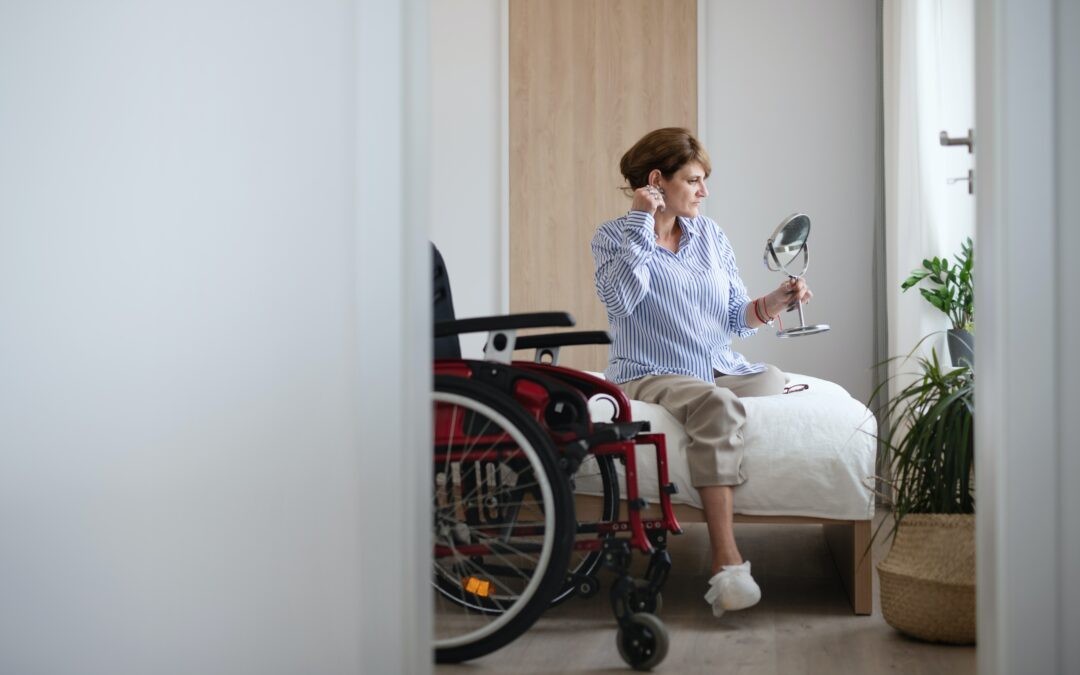A comfortable and accessible bedroom can significantly impact the overall well-being of adults with disabilities. An adequately designed bedroom can promote independence, self-sufficiency, and ease of mobility within the living space, facilitating a better quality of life. When designing an accessible bedroom, it is vital to consider the unique needs and preferences of the individual, ensuring that the space caters to their specific requirements and fosters a comfortable, secure environment.
Program Approved Service Agencies (PASAs), like Extended Care, play a vital role in connecting clients with Host Home Providers who offer residential care services. These providers work closely with clients to ensure that their living environments align with their needs, including designing accessible bedrooms tailored to their individual circumstances. By working together with clients, PASAs, and Host Home Providers, adults with disabilities can achieve greater self-sufficiency and enjoy a comfortable living space that supports their daily needs.
In this blog post, we will present a comprehensive guide to accessible bedrooms for adults with disabilities. We will explore essential elements to consider when designing an accessible bedroom, as well as tips and ideas for creating a space that is both functional and comfortable. By implementing these best practices, adults with disabilities can thrive in their living environments and enjoy a better quality of life.
Throughout this blog, we will discuss the following aspects of accessible bedrooms for adults with disabilities:
- Key Elements to Consider: An overview of essential factors to take into account when designing an accessible bedroom, focusing on the unique needs and preferences of the individual.
- Layout and Design: Tips for creating an accessible bedroom layout that optimizes space, ease of mobility, and overall functionality.
- Furniture and Fixtures: A discussion on selecting appropriate furniture and fixtures for an accessible bedroom, with a focus on style, comfort, and practicality.
- Additional Accessibility Features: Additional features and adaptations that can further enhance the accessibility, safety, and comfort of a bedroom for adults with disabilities.
Key Elements to Consider: Focusing on Unique Needs and Preferences
Before diving into the design process, it is essential to consider the client’s unique needs and preferences to create a well-designed, accessible bedroom. Here are some crucial factors to keep in mind:
- Space and mobility requirements: Evaluate the client’s mobility level to determine the amount of space required for comfortable movement and accessibility, including wheelchair use and assisted mobility.
- Specific needs and limitations: Discuss with the client any specific needs or limitations that may affect the space planning and design, such as sensory sensitivities, visual impairments, or chronic pain.
- Personal preferences and style: Design the bedroom to reflect the client’s individual style and preferences, creating a comfortable and personalized space.
- Safety and functionality: Ensure that all aspects of the bedroom design prioritize safety and functionality for the client, including secure fixtures, accessible storage, and ergonomic furniture.
By understanding the client’s unique needs, designers and Host Home Providers can create a tailored bedroom space that meets all necessary requirements while maintaining a comfortable, personalized environment.
Layout and Design: Optimizing Bedroom Spaces
An accessible and functional bedroom layout prioritizes the efficient use of space and optimal mobility for adults with disabilities. When planning, consider the following tips:
- Wide doorways and hallways: Ensure doorways are wide enough to accommodate wheelchair users and create a clear pathway for ease of navigation within the bedroom.
- Open floor plan: Aim for an open floor plan that minimizes clutter and offers sufficient space for unobstructed movement.
- Accessible storage: Place closets and shelves at a height that enables easy access for the client, including lower railings for hanging clothes and pull-down shelving systems for added convenience.
- Room for assistive devices: Make sure there is ample space to store assistive devices such as wheelchairs, walkers, or canes, and ensure they are within easy reach when needed.
Creating an accessible layout requires attention to detail, ensuring that the mobility and convenience needs of adults with disabilities are met to promote independence within their living space.
Furniture and Fixtures: Style, Comfort, and Practicality
Selecting appropriate furniture and fixtures for an accessible bedroom is crucial for creating an environment that is both stylish and functional. Consider the following furniture and fixture options:
- Adjustable bed: An adjustable bed with an elevation feature can significantly improve comfort and accessibility, particularly for clients with mobility limitations.
- Accessible bedside tables: Aim for bedside tables with open storage or easy-to-open drawers, and look for models with adjustable height settings for added convenience.
- Ergonomic seating options: Provide comfortable and supportive seating options such as ergonomic chairs or cushioned benches for clients to rest and relax.
- Easy-to-reach lighting controls: Ensure that all lighting controls are easily accessible from both the bed and any seating areas, making it convenient for clients to control the room’s illumination.
- Accessible dressers and wardrobes: Choose dressers and wardrobes with lower drawers and pull-out shelves for clients to access their belongings easily.
By carefully selecting furniture and fixtures that cater to the unique needs of adults with disabilities, designers can create a bedroom space that is both stylish and functional.
Additional Accessibility Features: Enhancing Safety and Comfort
Going the extra mile with additional accessibility features can greatly improve safety and comfort for adults with disabilities, making their bedroom spaces even more supportive and manageable. Here are some additional features to consider:
- Grab bars and handrails: Strategically placed grab bars and handrails can provide essential support and stability in the bedroom. Commonly installed near the bed and doorway, these aids can reduce the risk of falls and improve overall safety.
- Non-slip flooring: Opt for non-slip flooring options that can reduce the risk of slips and falls in the bedroom, such as rubber mats, non-slip rugs, or slip-resistant floor coverings.
- Voice-activated technology: For clients with limited mobility, consider integrating voice-activated technology such as smart speakers, enabling them to control various bedroom functions such as lighting and temperature more readily.
- Emergency alert devices: Ensure that clients have access to an emergency alert device within their bedroom, allowing them to call for assistance in case of an urgent situation.
Implementing these additional accessibility features can create a safer, more comfortable bedroom environment for adults with disabilities, promoting their independence and supporting their daily needs.
Conclusion
Designing an accessible bedroom for adults with disabilities is a collaborative process that involves assessing the individual’s unique needs, preferences, and limitations. By implementing a thoughtful layout, selecting appropriate furniture and fixtures, and incorporating additional accessibility features, designers and host home providers in Colorado can create comfortable, functional, and stylish bedroom spaces that promote independence and self-sufficiency for adults with disabilities. With the support of PASAs like Extended Care, individuals can enjoy tailored living environments that cater to their specific needs and enable them to thrive in their day-to-day lives.

